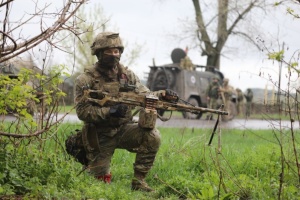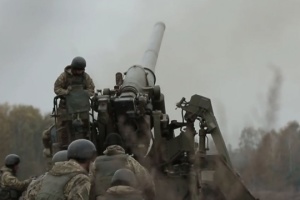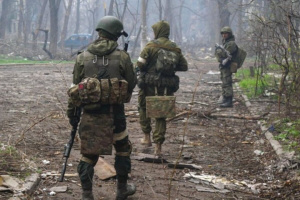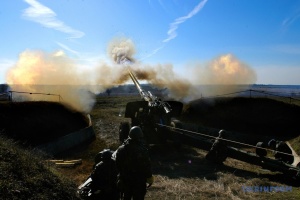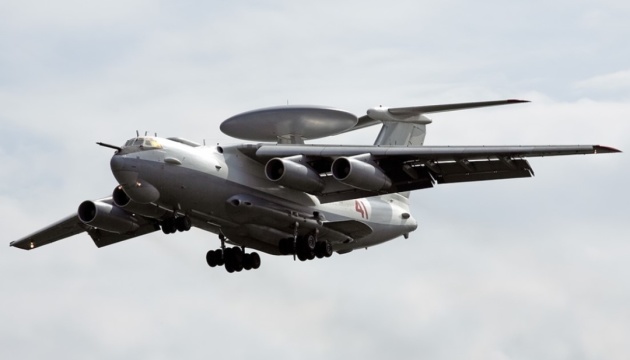
New Cruiser "Moscow": Meaning and Versions of Russian A-50 and Il-22 Destruction
Everyone already knows about it: on the evening of January 14, over the Sea of Azov, the Armed Forces of Ukraine destroyed an A-50 long-range radar detection aircraft and an Il-22 air control center of the Russian occupying country.
"I am grateful to the Air Forces for the perfectly planned and executed operation in the Azov Sea!" noted Commander-in-Chief of Ukraine's Armed Forces Valerii Zaluzhnyi.
"The special operation in the Azov region was successful. To be continued..." - commented the Air Force of Ukraine.
A little later, the command received additional information: An A-50 was destroyed, and an Il-22 made it to a military airfield near Anapa in the Krasnodar Territory of the Russian Federation, but according to Air Force spokesman Yuriy Ihnat, the aircraft "cannot be restored."
"The plane was on fire, there are wounded among the crew. And we hope there are 200 people among them. Whatever one may say, the target is destroyed, resuscitation will not help," added Colonel Ihnat.
Why the loss of these aircraft is a very painful blow for Russia and how it will affect the situation
Let's start with the A-50. This is a long-range radar detection and control aircraft based on the Il-76 military transport aircraft, which made its first flight on December 19, 1978. It was developed by the Taganrog Scientific and Technical Aviation Complex and the Vega Research and Production Association to replace the then-obsolete Tu-126. The operation of the prototypes began in 1985, and the aircraft was adopted by the Soviet army in 1988.
During the Soviet era, the industry managed to produce approximately 31 copies, and not many serviceable aircraft remain today: nine are in service with the Russian Federation in the A-50 and A-50U variants (three and six, respectively), and the rest are in service with the Indian Armed Forces.
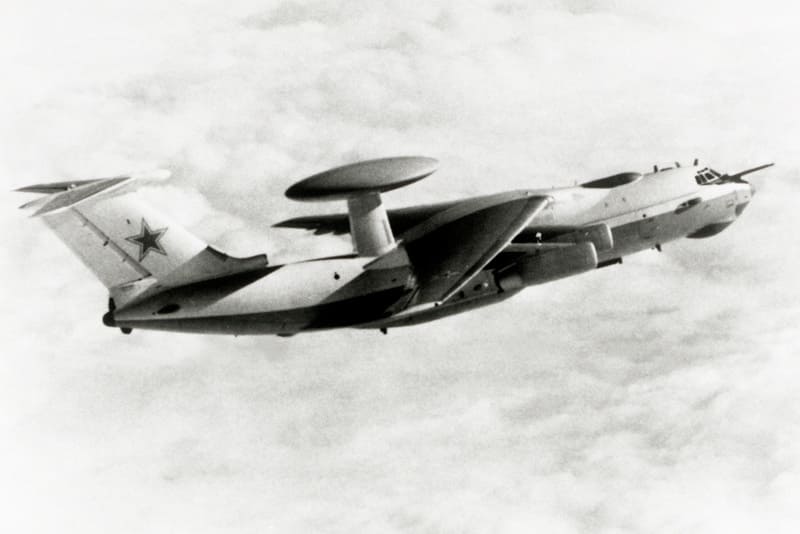
The A-50 is equipped with a radar system that can detect distant air targets, see cruise or ballistic missile launches, and air defense operations.
Russia has used this aircraft, in particular, to detect and combat Ukrainian air defense, and it was used for this purpose during massive Russian missile attacks against Ukraine. In addition to air defense, the A-50 also tracked the locations of Ukrainian aircraft, mapped strategic defense targets, and adjusted missile strikes.
Functionality of A-50 long-range radar detection aircraft:
- detection and tracking of air targets;
- alerting command posts and automated control systems about the air and surface situation;
- control of fighter and strike aircraft when they are directed at air, ground and sea targets;
- organization of an air command post.
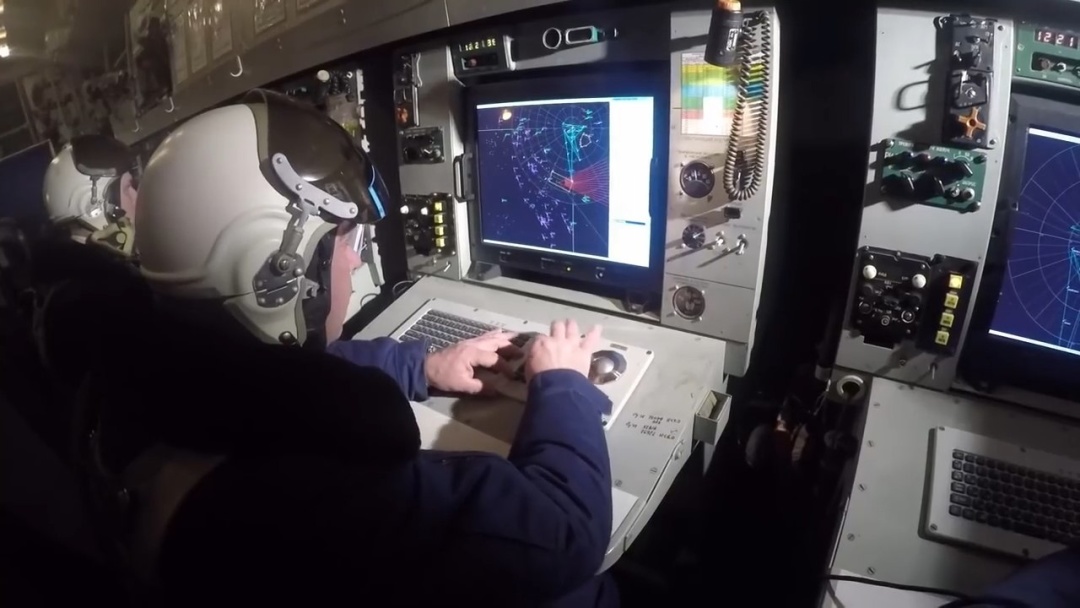
The aircraft is equipped with the Shmel radio system based on the Soviet Argon-50 onboard electronic computer. The Shmel complex includes:
- a three-coordinate radar station with a passive direction finding channel;
- equipment for capturing and displaying the received information;
- an active request-response system for transmitting commands or targeting information to interceptors;
- digital computing system for solving control tasks, guidance of fighters to air targets;
- radio control command line equipment;
- communication system (also classified) and telecode equipment;
- Documentation equipment;
- state recognition system.
In addition to five flight crew members, 10-11 operators work with the system on board the aircraft.
As for the Il-22M11. It was developed in the 1980s on the basis of the Il-18D passenger airplane. A total of 21 such aircraft were produced. Most of them were acquired by the Russian Federation after the collapse of the USSR. Five of them have been modernized in recent years.
It has secure communication channels that can withstand serious electronic warfare. Troops are controlled from such an aircraft, and it is protected from strikes by tactical missiles.
According to Military Balance 2022, at the beginning of the full-scale war, Russia had 12 Il-22M and 10 Il-22 (older modification) aircraft.
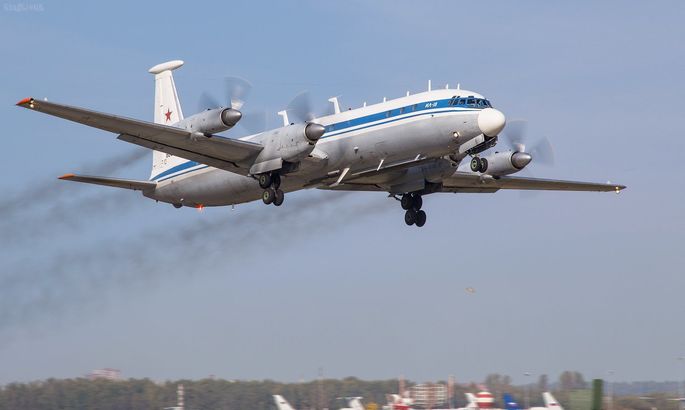
Technical characteristics:
- crew - 5 people (two pilots, navigator-bombardier, radioman, stern gunner);
- length - 21.1 meters;
- Wingspan - 23.1 meters;
- height - 10.17 meters;
- Wing area - 74.5 square meters;
- takeoff weight - 20,000 kilograms;
- maximum speed - 685 kilometers per hour;
- cruising speed - 625 kilometers per hour;
- practical range - 6,500 kilometers;
- practical ceiling - 11.1 kilometers;
- run-up length - 1,144 meters.
In a commentary to Ukrinform, Oleksandr Kovalenko, a military observer of the Information Resistance group, said that the A-50 is a rare aircraft for Russian aviation. Out of the nine available, three or four are not airworthy.
"One is undergoing modernization, which it cannot get out of. Two need deep repairs. Another one... Remember how in February 2023, an A-50 was damaged in Belarus [the plane, located at the Machulishchi airbase, was attacked by a drone] This plane was sent for repairs, which it has not yet completed. And it is unlikely to do so, because it is a long process that Russia cannot currently carry out either technically or technologically," the expert says.
So by January 14, 2024, Russia had five A-50s.
"Until recently, five different A-50s were on combat duty. Now there are four left," says Mr. Kovalenko.
The aircraft is capable of reconnaissance, air, ground and surface targets, can detect ballistic missile plumes at a distance of up to 800 km, and the radar can locate and track aircraft and cruise missiles, including Storm Shadow and SCALP, at distances of up to 700 km. Targets of air defense and ballistic missiles can be detected at distances of up to 400 km, and armored vehicles - up to 450 km. "Moscow" has also boasted that the A-50 can target S-400 anti-aircraft missiles.
"The A-50 can give targeting instructions to fighters and act as an air command post, conduct additional reconnaissance of the airspace, and increase the range of air defense systems," the military expert added.
In Soviet times, the A-50 cost approximately USD 350 million. For example, the Ukrainian An-124 Ruslan costs half as much. Now the cost of the A-50 can reach more than USD 500 million. As for the Il-22, this aircraft can cost about USD 30 million.
"Russia cannot produce A-50s now. The loss of at least one is very painful, it is also a serious reputational blow. In addition to the A-50, the Il-22 was also damaged [by the way, the Ukrainian Air Force already shot down an Il-22 in April 2022, and another Il-22 was shot down in June 2023 during the Wagnerian mutiny]," emphasizes Oleksandr Kovalenko, "This is truly an unprecedented case in the modern history of wars and conflicts when two aircraft so unique in their functionality are destroyed or damaged at the same time."
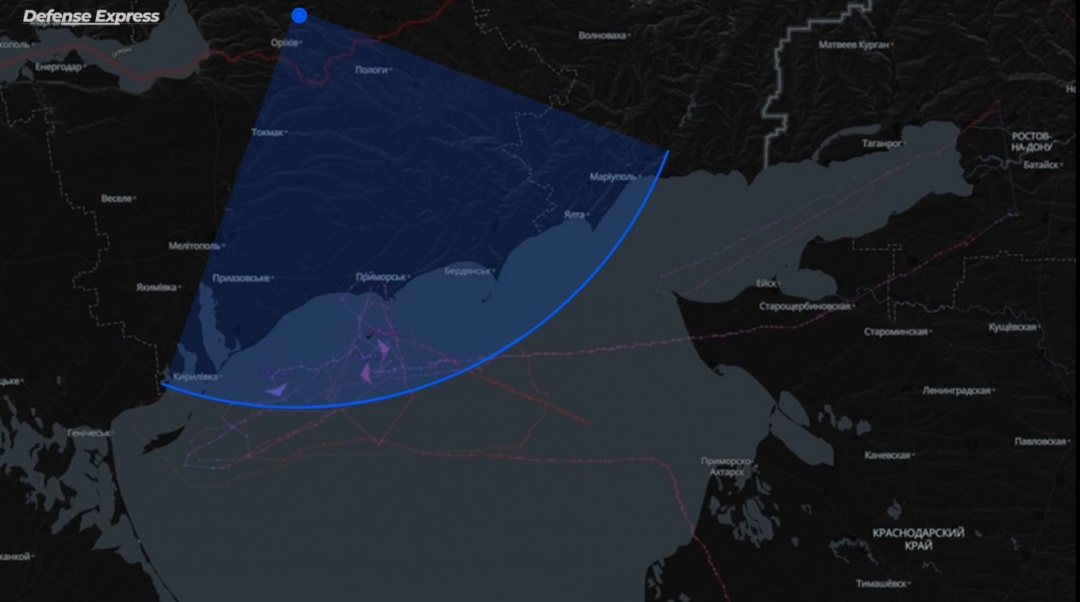
Aviation expert Valerii Romanenko calls the downing of the A-50 the enemy's biggest loss in the air.
"These planes are flying radars equipped with a radar station that allows you to see absolutely everything from above. A-50s can fly very close to the front line at low altitudes, making it impossible for Ukrainian aviation to operate. For the Russian Aerospace Forces, this is a very heavy loss and, in human terms, the largest since the beginning of the war. The crew of the A-50 consists of 5 people and 11 other operators, all of whom are highly qualified officers with the rank of captain or higher. The Russians lost 16 people in one combat flight," the expert emphasized.
The loss of the A-50 is the second most damaging after the destruction of the "Moscow" cruiser.
"If we add the elimination of the command post on board, the Russians will have "holes" at the front through which Ukrainian strike forces will be able to strike at the most important enemy targets," says Valerii Romanenko.
Moreover, the defeat of the A-50 will affect Russian missile strikes against Ukraine.
"It will definitely reduce their effectiveness. After all, even Russian missile weapons have problems with accuracy and guidance is essential," says Oleksandr Kovalenko.
Last but not least, the enemy will now realize that there are no "safe places" in the sky for its aircraft, as earlier, after the destruction of the Moskva, it realized that there is no peace for its ships in the Black Sea.
F-16s, Patriot SAMs, state-of-the-art electronic warfare systems: how the Ukrainian Armed Forces could shoot down enemy aircraft
Oleksandr Musienko, director of the Center for Military Legal Studies, does not rule out that enemy aircraft were hit by electronic warfare systems used by the Ukrainian Defense Forces. Most likely, he says, our country has made significant progress in this area. And British partners have helped.
"I think this is a complex combined operation. When the Air Force reported that some of the missiles that Russia used to attack Ukraine on the morning of Saturday, January 13, were neutralized by electronic warfare," said Mr. Musienko.
According to him, Ukraine has begun to use electronic warfare systems quite actively.
"Ukrainian forces may have received a serious reinforcement due to the visit of British Prime Minister Rishi Sunak to Kyiv. Because it was the British division of the French corporation Thales that tested many interesting solutions for electronic warfare," says the director of the Center for Military Legal Studies.
Let's assume that Ukraine has started using certain electronic warfare devices that deliver powerful pulses, causing problems on board the aircraft. For example, equipment failure, and there is a lot of such equipment on the aircraft, which can cause a fire and explosion on board.
"This version, in my opinion, is quite likely. Our capabilities are growing, and this is good news," emphasized Musienko.
Analysts from the Defense Express military publication write that the most obvious option is a "roving Patriot": "This air defense system with GEM-T missiles has a range of up to 160 km to hit high-altitude aerodynamic targets. If it is placed in a rather dangerous proximity to the front line, it can reach enemy aircraft flying over the Sea of Azov."
At the same time, the A-50 crew most likely saw anti-aircraft missiles approaching it on the radar screens.
"The A-50, which is based on the Il-76 transporter, is physically unable to carry out effective anti-aircraft maneuvers, so the racists could only wait for their fate," Defense Express added.
Valerii Romanenko also believes that the Patriot system could have shot down the A-50 and critically damaged the IL-22: "The distance there was about 150 km. And the declared range of the Patriot is 160 km."
In his opinion, the Patriot model, provided to Ukraine by German partners, was able to shoot down the Russian aircraft at the maximum range.
"But this is a low-altitude range. The A-50 operates at altitudes of 6-8 thousand meters, where it is difficult to reach with the Patriot. But I am inclined to believe that it was a "wandering" German Patriot," added Mr. Romanenko.
Meanwhile, Major Oleksii Hetman, a reserve officer in the Armed Forces of Ukraine, cautiously suggests that the enemy aircraft could have been hit by F-16 fighters [according to official data, there are no F-16s in Ukraine yet.]
"We can assume that we used airplanes, maybe even F-16s, who knows," - says Mr. Hetman. However, he admits that "this assumption is very optimistic."
And this is Colonel of the Armed Forces Reserve, military analyst Petro Chernyk: "There can be many versions. Even the SAMP-T missile in the Aster-30 configuration has a range of up to 300 kilometers. Plus, let's not forget that our old aircraft systems, such as the MiG-29, have successfully integrated the AGM-88 HARM missile."
There is another version that experts have unanimously questioned.
The version of "friendly fire": The Kremlin cannot allow Russians to think about Ukraine's ability to shoot down scarce aircraft
While Ukraine and the world are wondering what the Ukrainian Armed Forces used to shoot down the Russian planes, Russian publicists are actively promoting their version, saying that it was "friendly fire" and that the "friend or foe" system did not work.
According to Oleksandr Kovalenko, in general, this version seems plausible, because, he recalls, Russian air defense only shot down several of its tactical aircraft and Ka-52 attack helicopters over the temporarily occupied areas of Zaporizhzhia and Kherson regions in 2023.
However, there is a nuance...
"Il-22 and A-50 have been flying the same routes day after day for the second year in a row to ensure the stability of communication, airspace control and tactical aviation management," says Mr. Kovalenko. - "Day after day, week after week, month after month, IL-22s (any of the 6 sides) took off from Akhtubinsk, Rostov-on-Don, and Marynivka airfields and flew over Voronezh, Rostov, TOT parts of Luhansk and Zaporizhzhia regions, and over the Sea of Azov."
It was the same with the A-50. Up to 4 planes took off from Akhtubinsk, Anapa and Krymsk airfields and took turns on duty in the airspace over the Azov Sea. Even with the "friend or foe" system inoperative, these aircraft were supposed to look like their own on air defense radars. In addition, the expert points out, an aircraft of this size, its speed and altitude cannot be confused with, for example, an enemy missile or fighter jet.
"If it was "friendly fire," it will go down in the world history of wars and conflicts as the loudest facepalm [shame, disgrace]. If not... This is a very unique case in the history of wars and conflicts. Two such unique planes were "landed" in such a deep rear zone?" wonders the observer of the Information Resistance group.
Oleksii Kopytko, a journalist and former advisor to the Minister of Defense, also believes that the version of "friendly fire" was introduced by the enemy as a "lesser evil." The Kremlin cannot allow the Russians to think that Ukraine is able to shoot down scarce aircraft in the rear.
"A technical failure, like the military's sloppiness, is an organic explanation for Russia," says Mr. Kopytko. - "The trouble for the Kremlin is that these planes are too specific and flew on the most predictable routes. That's why Russians themselves are asking the question in their comments: what could have happened to make such planes suddenly stop being recognized? And two at once".
However, by throwing in this version, the Russian authorities reminded everyone of the danger that the Rosarmy poses to the civilian population of Russia.
"The episodes in Voronezh region and Belgorod, the missiles that fell in different regions of the Russian Federation, coupled with yesterday's "incident" show that the Russian aviation bombs anything, and the Russian air defense fires randomly in all directions," summarized Oleksii Kopytko.
Myroslav Liskovych. Kyiv

